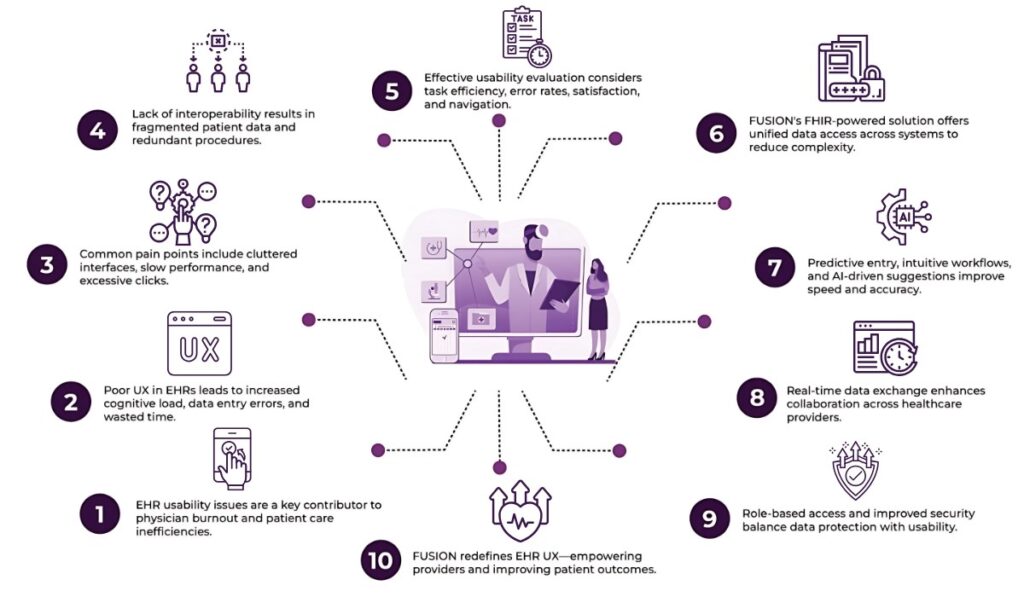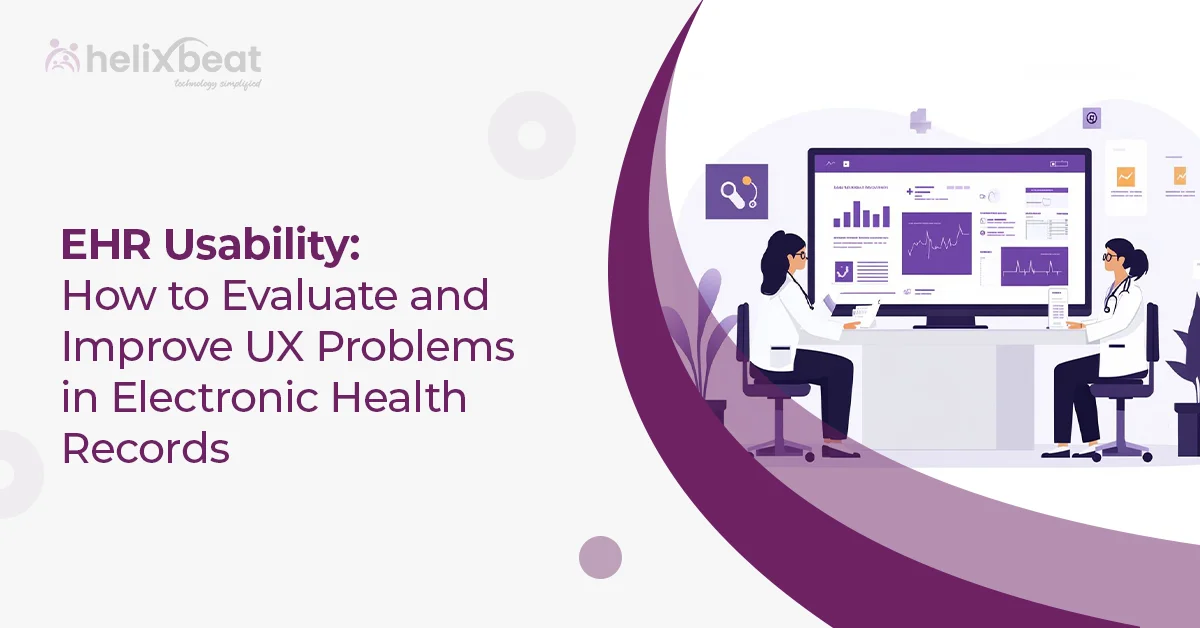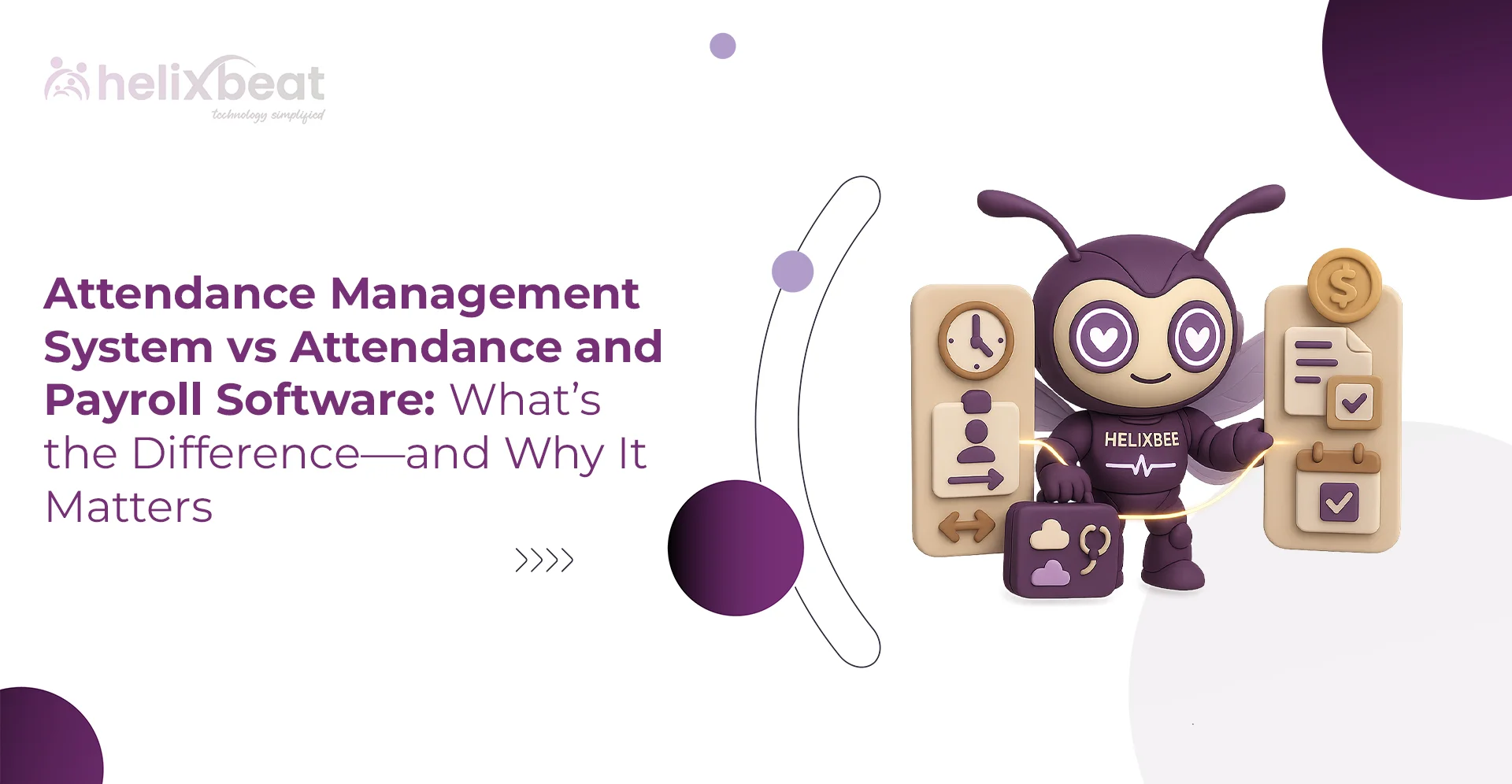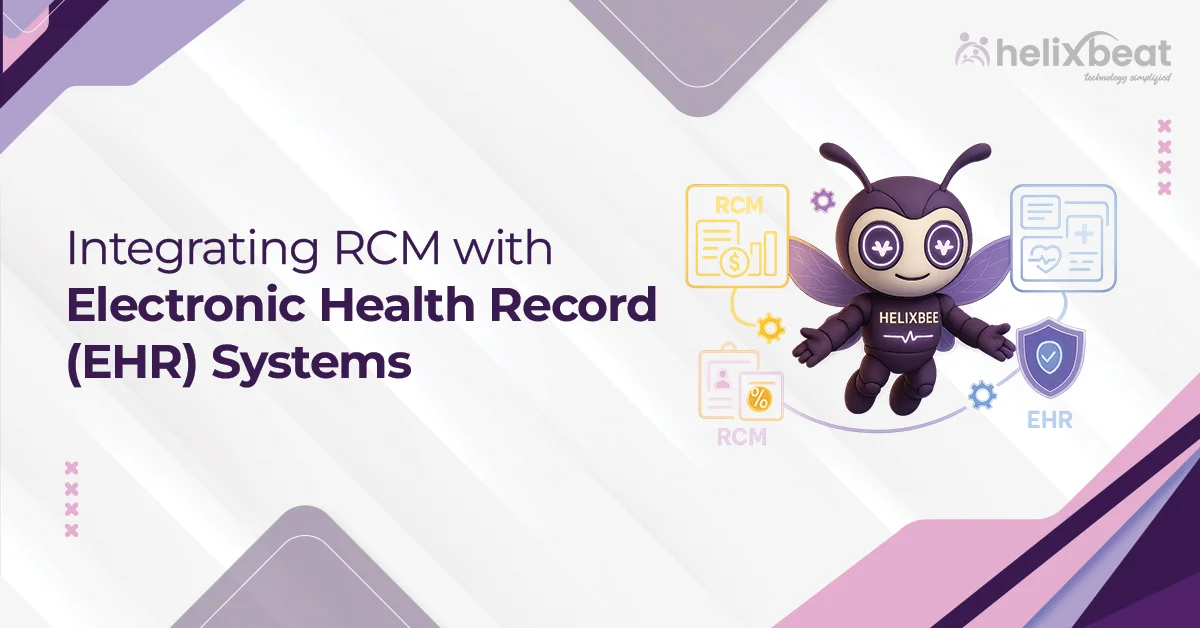Table of Contents
Introduction
Electronic Health Records (EHRs) are a relatively recent phenomenon. It’s just been over the last decade that hospitals, clinics, and all manner of other healthcare facilities have undergone a massive digitization effort. Now, of course, 96% of healthcare providers use electronic health record systems, but that doesn’t mean the systems are perfect. There are often serious electronic health record usability issues that do affect doctors and medical staff.
While some of those electronic health record usability issues can always be chalked up to lack of training and lack of proper implementation, the brutal facts remain. Doctors often spend as much time with electronic health record systems as they do with their patients. That means that often-basic user experience (UX) issues are leading to burnout for doctors.
That trend is unacceptable, and there’s always more we can do to improve the usability of electronic health record systems for doctors and staff.
So, let’s first start by understanding what usability is and how following best practices can dramatically improve your results and overall experience.
What is Electronic Health Record Usability?
EHR usability refers to how easily and efficiently healthcare professionals can interact with an electronic health record system to complete their tasks. A well-designed EHR should be intuitive, fast, and reduce cognitive workload, allowing medical staff to focus on patient care rather than struggling with technology.

Why EHR Usability Matters
- Efficiency: Doctors and nurses should be able to access and update records quickly without unnecessary steps.
- Error Reduction: Poorly designed interfaces can lead to mistakes in patient data entry, medication prescriptions, and treatment planning.
- Physician Satisfaction: An intuitive system helps reduce frustration and burnout among healthcare workers.
- Improved Patient Care: When medical professionals spend less time on documentation, they can focus more on diagnosis and treatment.
Example of Poor EHR Usability
Imagine a doctor needing to prescribe medication for a patient. If electronic health record systems require them to click through five different screens, search through hundreds of drop-down options, and manually enter dosages and interactions every time, it significantly slows them down. This cumbersome process not only wastes time but also increases the risk of human error
How Do You Determine How User-Friendly EHRs Are?
Assessing EHR usability requires a structured evaluation approach. Here are the key factors to consider:
- Task Efficiency: How long does it take for a user to complete a specific action?
- Error Rate: How often do users make mistakes while entering or retrieving data?
- Navigation Simplicity: Are workflows logical and intuitive, or do users struggle to find essential functions?
- User Satisfaction: Are healthcare professionals frustrated with the system, or do they find it helpful?
- Cognitive Load: Does the system make complex tasks easier or harder to perform?
These factors can be measured through user testing, surveys, and direct observation of medical staff interacting with the electronic health record systems.
Key UX Issues in EHR Faced by Healthcare Professionals
Healthcare professionals frequently struggle with design flaws that make daily tasks more frustrating than seamless.
1. Complex and Cluttered Interfaces: Electronic health record systems interfaces are often cluttered with excessive data fields, redundant menus, and poorly organized layouts. Instead of simplifying workflows, these design issues make it difficult for healthcare providers to quickly locate essential patient information, leading to frustration and inefficiency.
2. Slow System Performance and Downtime: Electronic health record systems frequently suffer from sluggish performance, making tasks like retrieving patient records or updating charts unnecessarily time-consuming. System crashes and downtimes further disrupt workflow, forcing providers to resort to manual documentation or delay critical patient care.
3. Excessive Clicks and Inefficient Workflows: Many EHR systems require an excessive number of clicks to complete simple tasks. Whether entering patient notes, ordering medications, or retrieving lab results, the inefficient workflow slows down healthcare professionals, increasing cognitive load and reducing time spent with patients.
4. Interoperability Issues: EHRs often fail to seamlessly exchange data across different healthcare systems, creating fragmented patient records. This lack of interoperability leads to miscommunication, redundant tests, and incomplete patient histories, ultimately impacting the quality of care.
5. Data Overload & Cognitive Burden: Clinicians are frequently overwhelmed by excessive, unstructured information within electronic health record systems. The lack of prioritization forces them to sift through unnecessary data, increasing decision fatigue and slowing down crucial medical judgments.
6. Limited Real-Time Collaboration: Electronic medical records software often lacks effective communication tools for seamless collaboration between primary care providers, specialists, and allied health professionals. Delayed access to shared test results and treatment updates can lead to mismanagement of patient care.
Lack of Patient-Centric Features: Many electronic medical records software fail to empower patients with control over their own health data. Limited integration with wearables and mobile health apps prevents proactive healthcare management, reducing engagement in personal well-being.
Solving UX Problems in EHR Systems with FUSION’s FHIR Unified Solution
1. Reducing Cognitive Load with Unified Data Access
One of the biggest UX issues in electronic medical records software is information overload. Clinicians must navigate multiple screens and log into different systems to retrieve a patient’s complete medical history. This fragmentation leads to wasted time and increased mental fatigue. FUSION solves this by consolidating patient records from various systems into a single, unified interface. By leveraging FHIR-based interoperability, it provides seamless access to patient history, prescriptions, lab results, and imaging reports, ensuring healthcare providers get a comprehensive view of a patient’s medical journey at a glance.
2. Improving Navigation and Workflow Efficiency
Traditional EHR systems require multiple clicks and redundant data entry, making simple tasks cumbersome. This inefficiency leads to frustration among medical professionals, who spend more time on data entry than on patient care. FUSION optimizes workflows by providing intuitive navigation, predictive data entry, and auto-suggestions based on AI-driven algorithms. Streamlining processes significantly reduces the number of clicks required to complete routine tasks, thereby enhancing user satisfaction.
3. Enhancing Interoperability for Seamless Data Exchange
Healthcare facilities use different electronic health record systems that often fail to communicate with one another. FUSION overcomes this barrier by implementing FHIR standards, which allow for the standardized exchange of health data across hospitals, clinics, pharmacies, and insurance providers. This ensures that patient records are accessible regardless of the system being used, eliminating redundant tests and unnecessary procedures.
4. Optimizing Performance with Faster Data Retrieval
Slow-loading electronic medical records software can disrupt patient care, forcing clinicians to wait for critical information. FUSION incorporates cloud-based data indexing and caching mechanisms, ensuring instant access to medical records. By using an optimized data architecture, it reduces system lag and allows for real-time updates, making healthcare delivery more efficient.
5. Enhancing Security and Role-Based Access Control
Security in electronic health record systems is crucial but often comes with cumbersome UX challenges. Managing user roles and permissions can be complex, leading to either excessive restrictions or unintended data breaches. FUSION employs role-based access control (RBAC), allowing administrators to easily define access levels for different users through an intuitive dashboard. This ensures that sensitive patient data is protected while maintaining ease of access for authorized personnel.
Final thoughts
At the heart of every healthcare interaction is a patient who deserves the best care and a provider who needs the right tools to make it happen. Electronic health record systems should empower, not overwhelm. FUSION brings a refreshing change by simplifying workflows, reducing stress, and making critical information instantly accessible.
Whether it’s a small clinic or a large hospital, healthcare professionals can now focus more on their patients rather than struggling with inefficient systems. By enhancing UX in EHR systems through seamless interoperability, intuitive design, and AI-driven optimizations, FUSION is not just improving EHRs—it’s redefining the future of patient care.
FAQs
1. What are the biggest usability challenges in electronic health record systems?
Common challenges include complex interfaces, excessive clicks, slow performance, poor mobile optimization, interoperability issues, and cognitive overload for healthcare professionals.
2. How does poor EHR usability impact healthcare professionals?
Doctors and nurses often spend more time navigating inefficient EHR systems than with patients, leading to burnout, frustration, increased error rates, and reduced overall efficiency.
3. How can hospitals evaluate the usability of their EHR system?
Usability can be assessed through user testing, workflow analysis, task efficiency measurement, error rate tracking, and feedback from healthcare professionals.
4. What role does interoperability play in improving EHR usability?
Interoperability allows different EHR systems to seamlessly exchange patient data, reducing redundant tests, improving communication between providers, and ensuring better patient care.
5. How can AI and automation improve EHR usability?
AI-powered features like predictive text, smart alerts, voice commands, and automated data retrieval can streamline workflows, reducing the time spent on documentation and decision-making.
6. Why is mobile optimization important for EHR systems?
Healthcare professionals need on-the-go access to patient records. A well-optimized mobile EHR system improves efficiency, especially in emergency and remote care settings.
7. What are the best strategies for improving EHR usability?
Improving navigation, reducing clicks, optimizing workflows, enhancing interoperability, leveraging AI, ensuring mobile-friendliness, and gathering regular user feedback are key strategies for better EHR usability.














